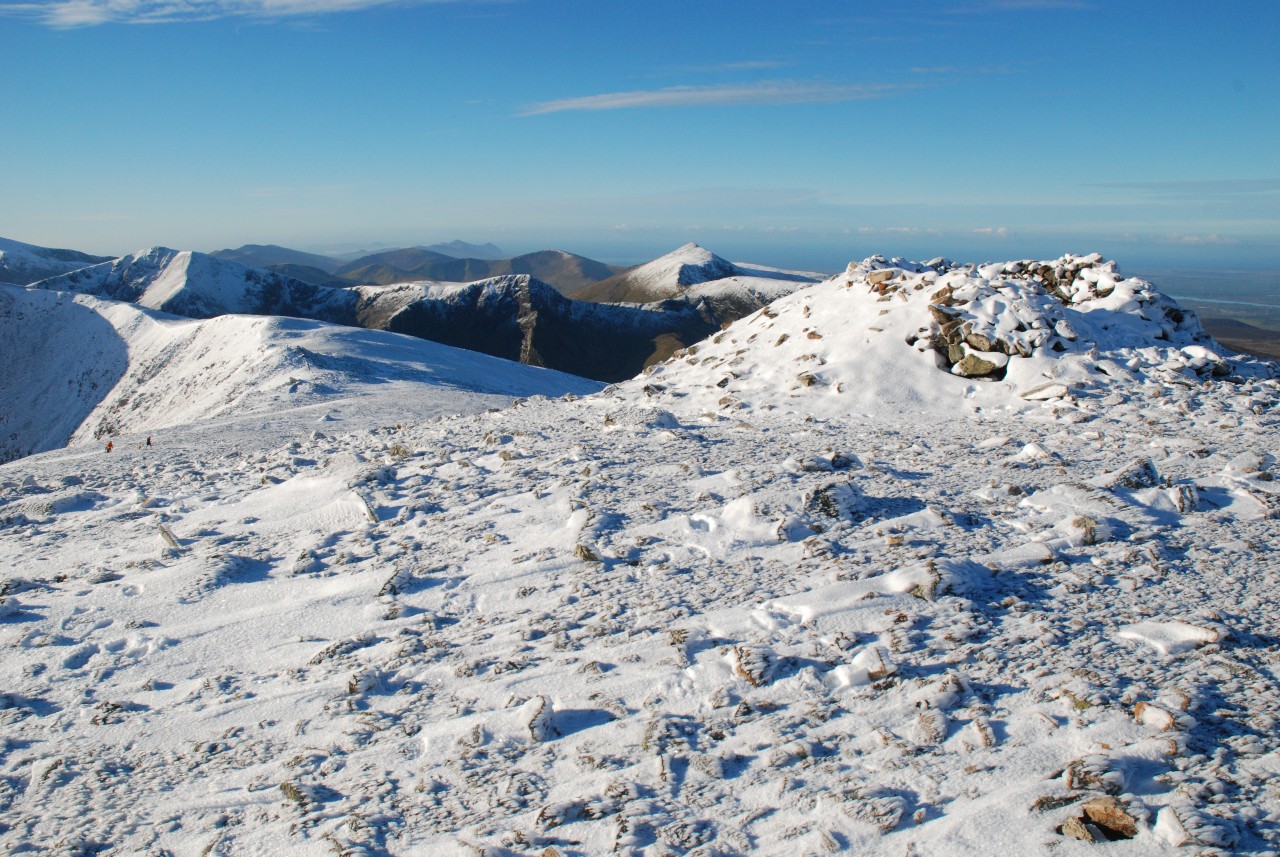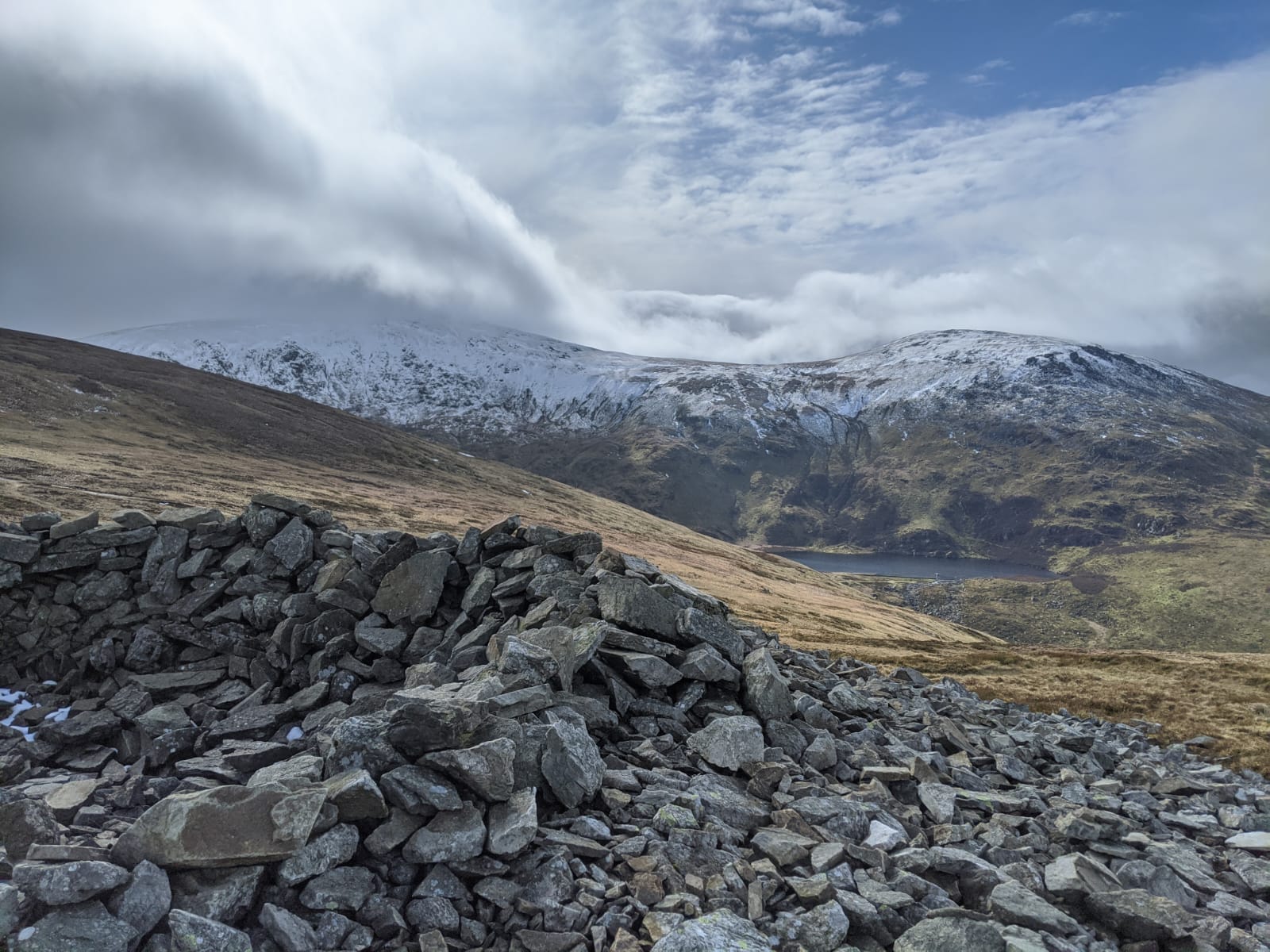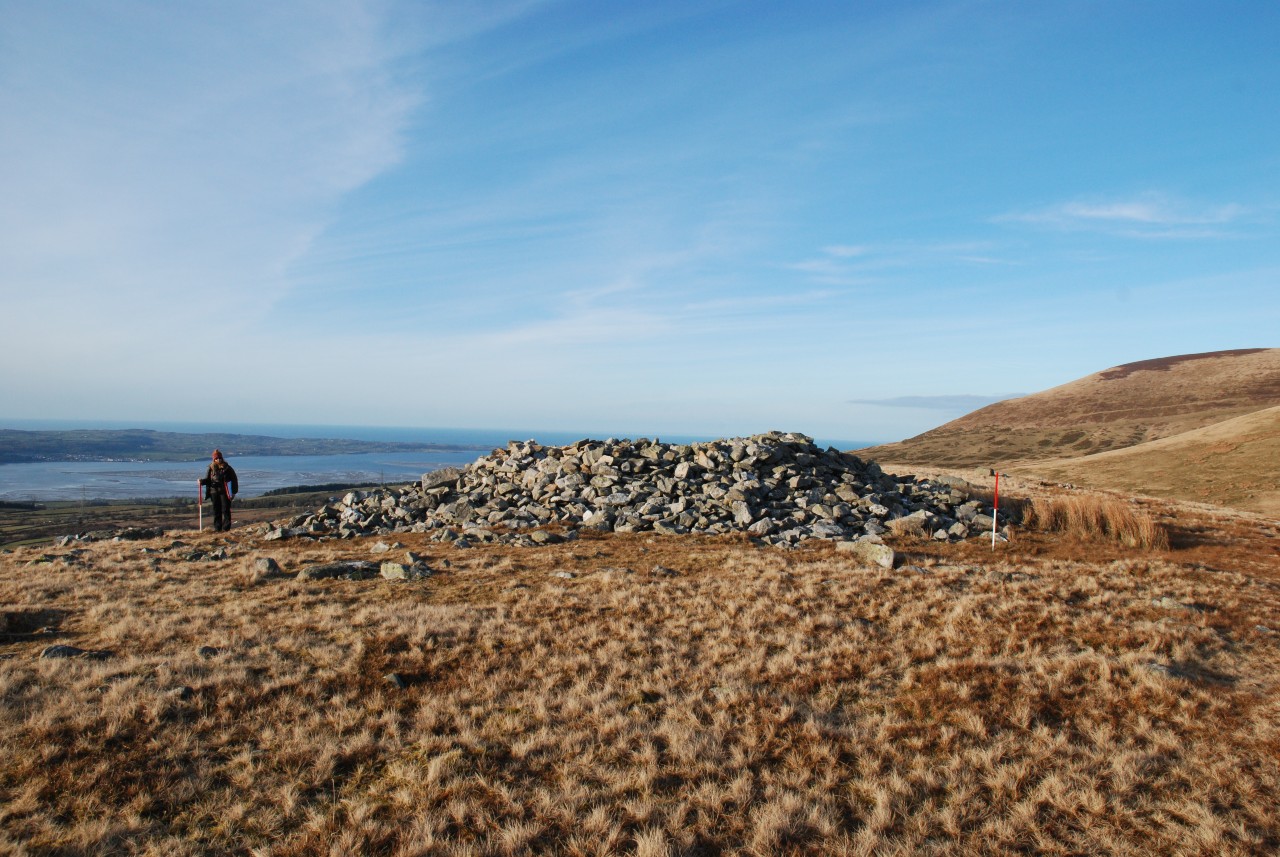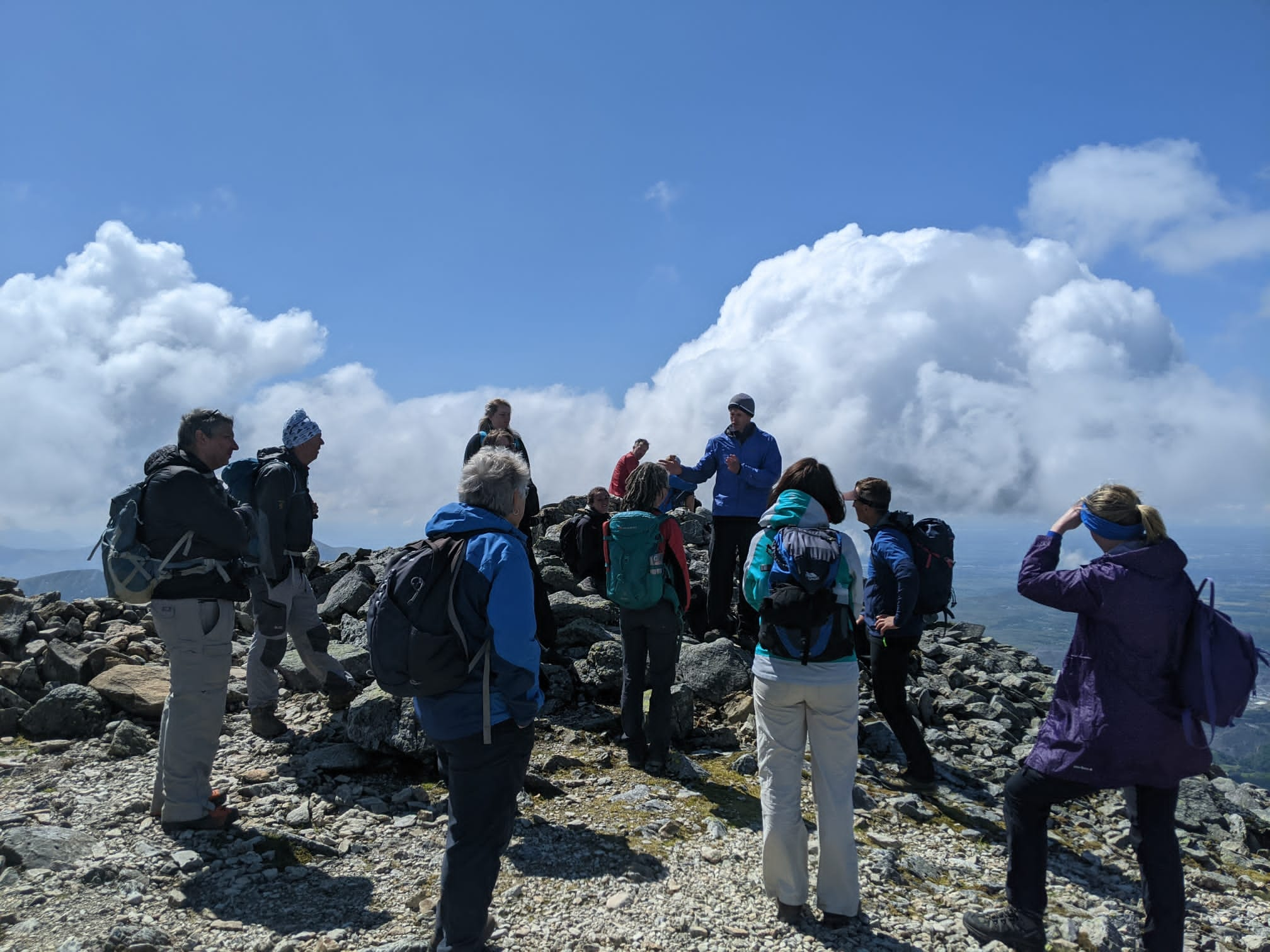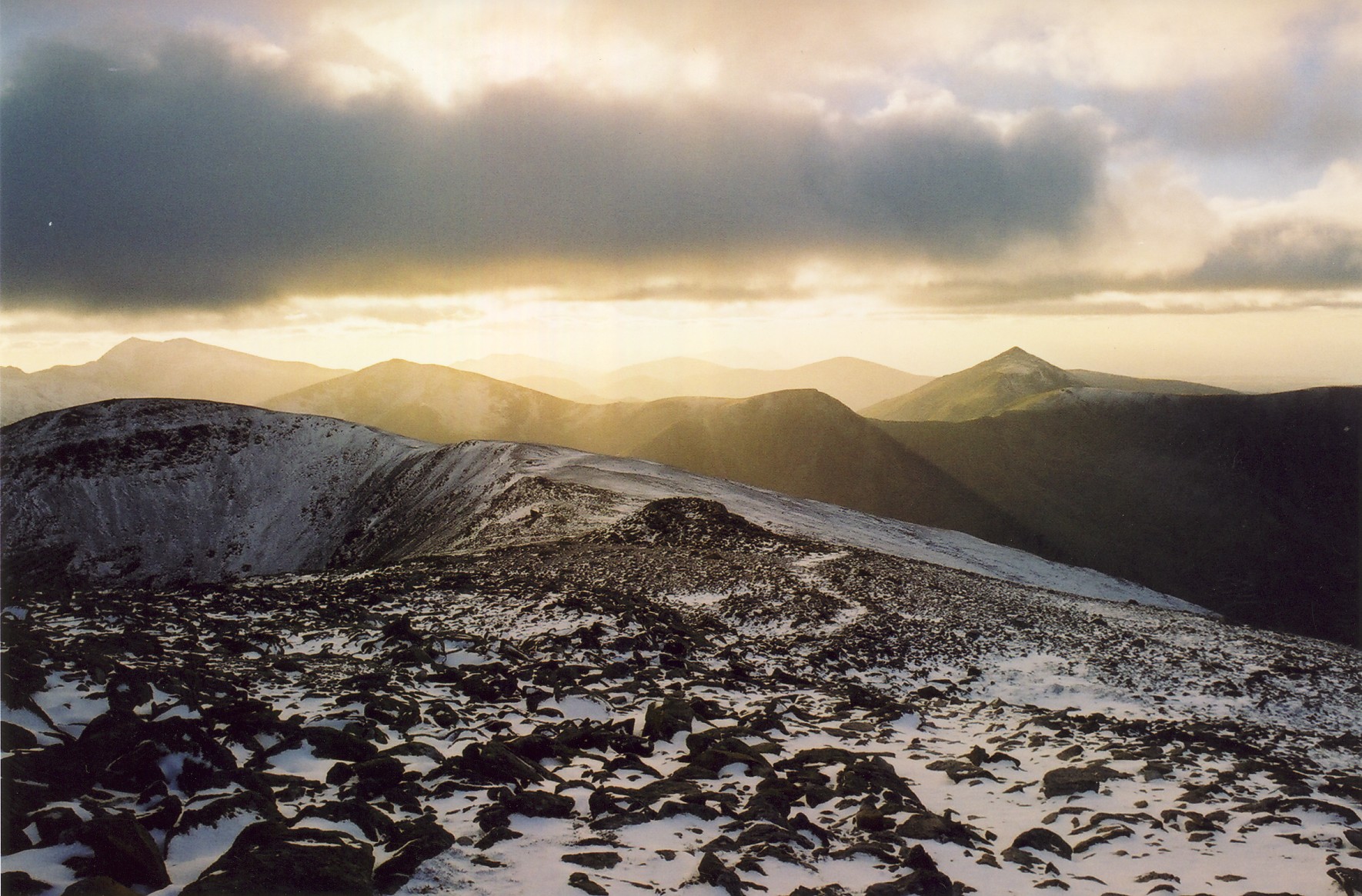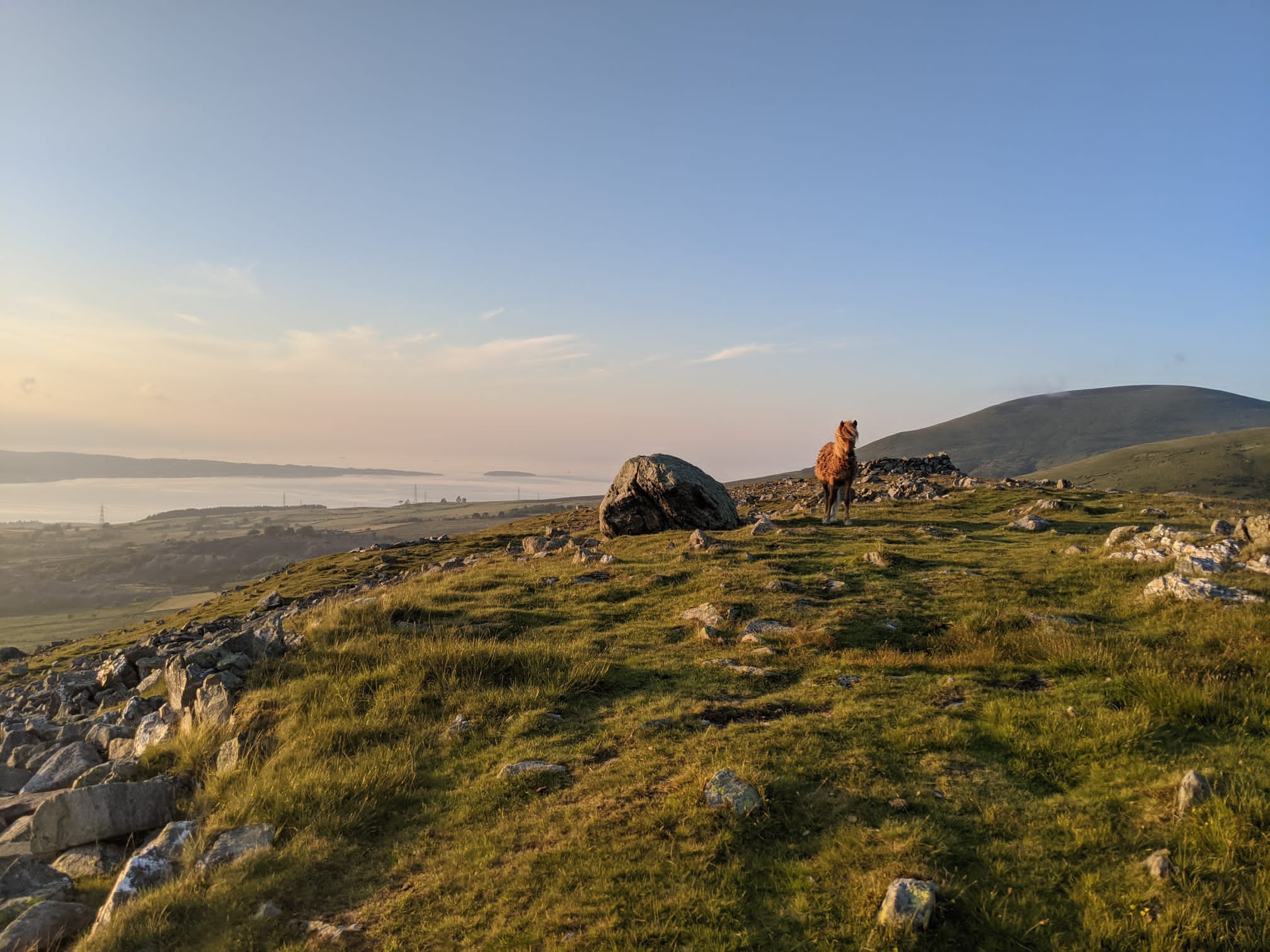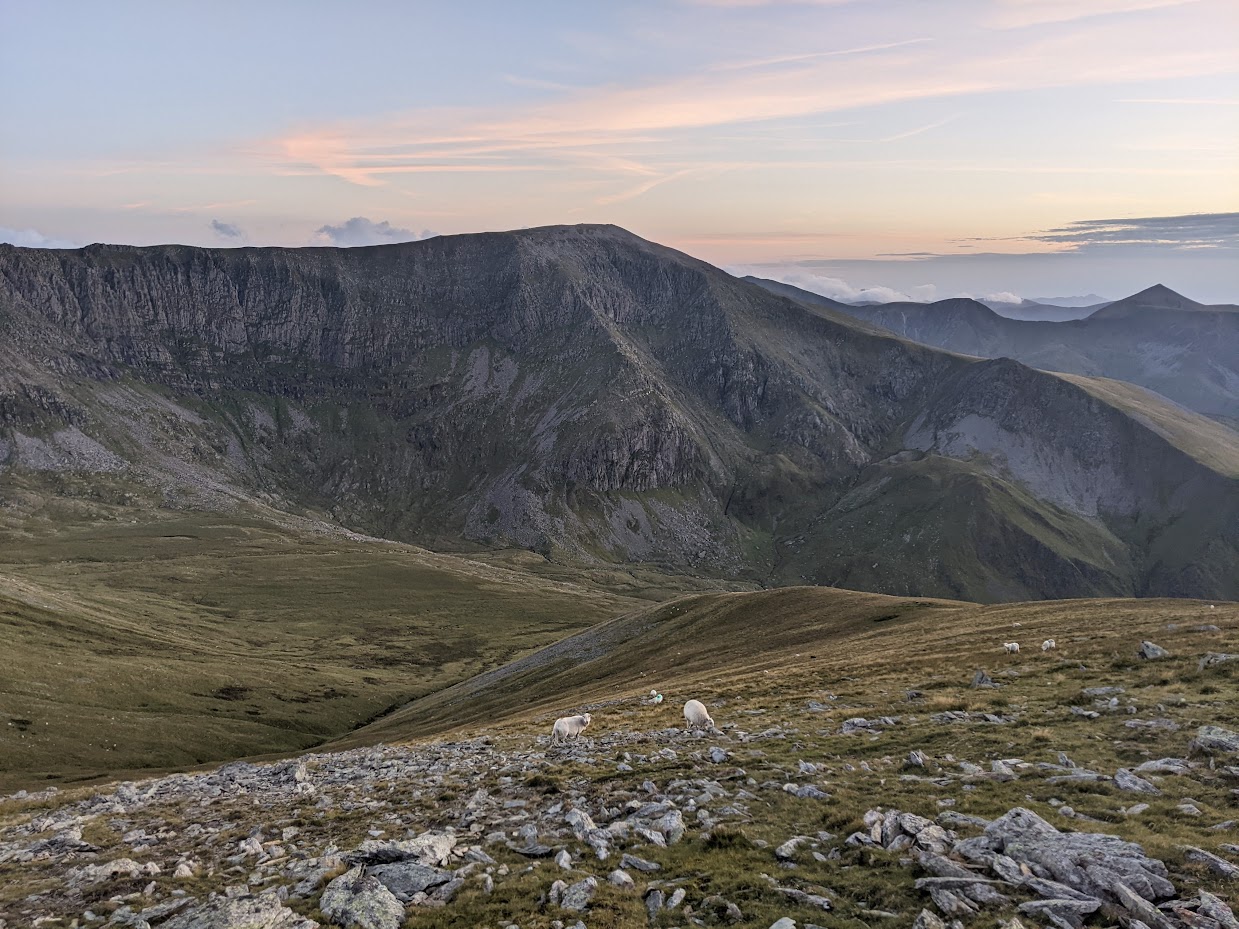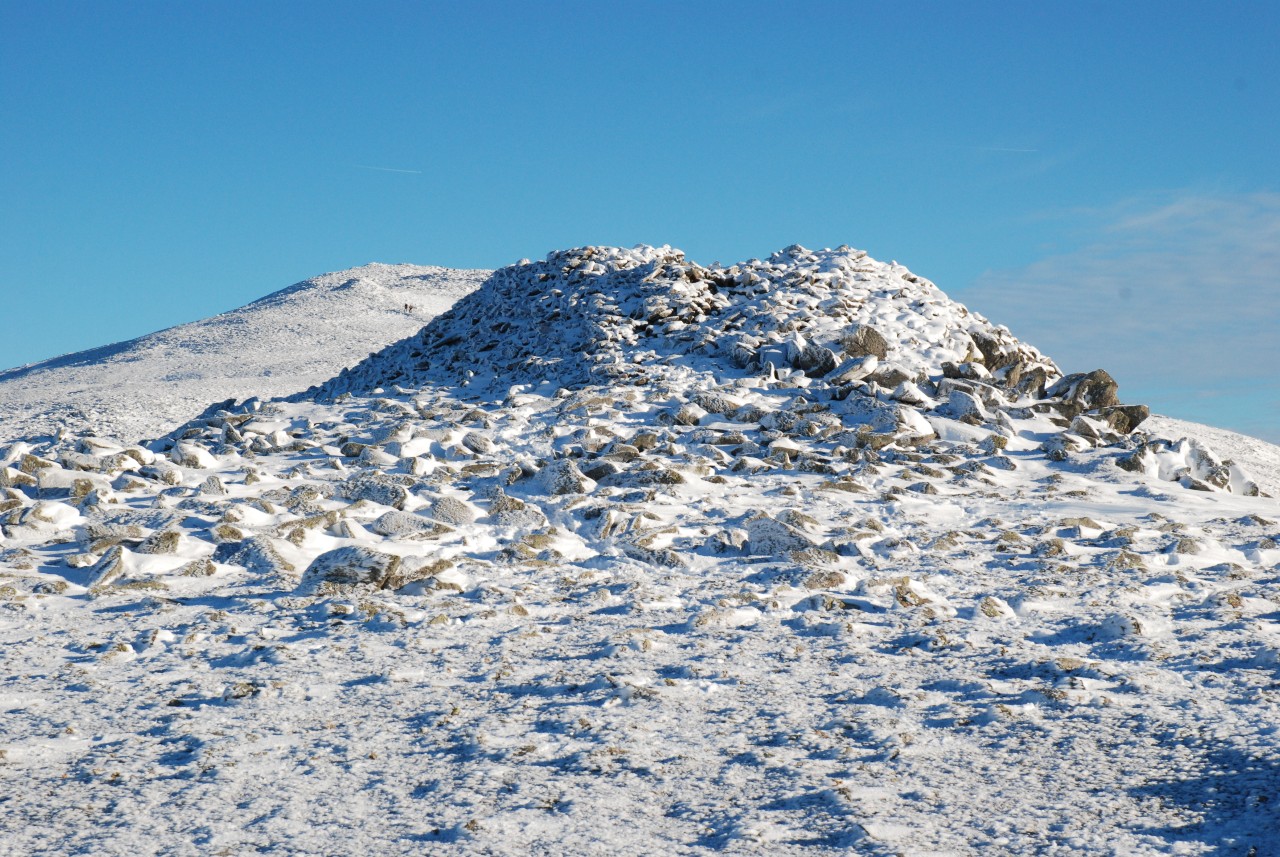The Carneddau’s prehistoric stone cairns date to the Early Bronze Age (roughly 4,500 – 3,500 years ago). They were built during the same period as the other ceremonial monuments, such as stone circles and standing stones, that are common in the lower slopes and passes of the Carneddau. The Carneddau has one of the densest concentration of prehistoric ceremenonial and burial monuments in the UK.


